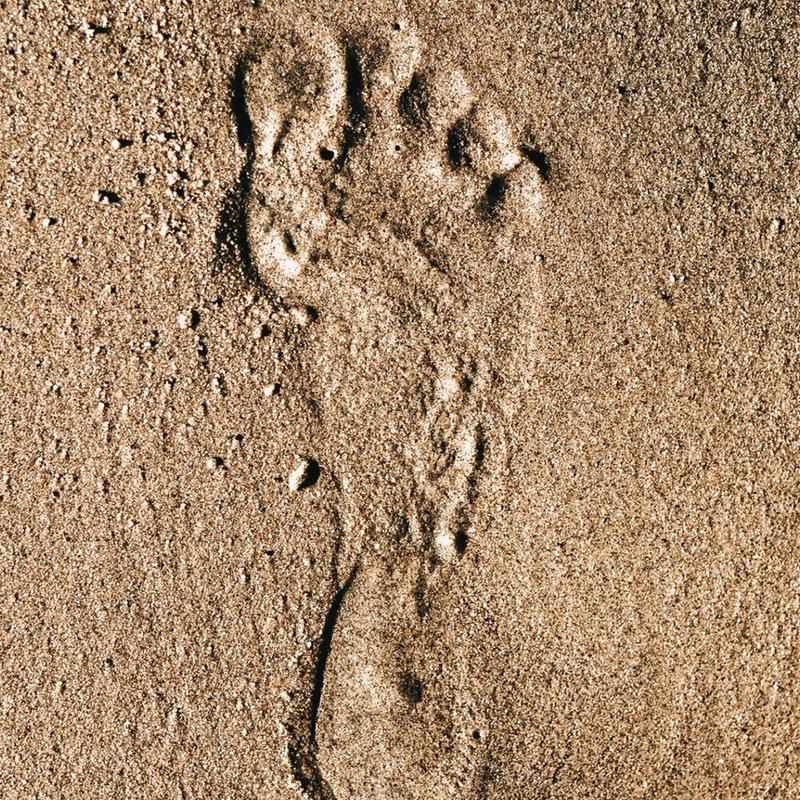One of the most wonderful truths of Scripture is that God wants to be near to us. He isn’t a distant deity, unconcerned with the world’s affairs. God has actually chosen to step down from the heavenly heights and plant his feet here in our midst. Here are three places the Bible says God’s feet touched the ground.
God’s Presence in the Temple
David described the temple he wanted to build for God as “a house of rest for the ark of the covenant of the Lord and for the footstool of our God”(1 Chron. 28:2). In the Psalms, this language of “footstool”is also picked up: “Let us go to his dwelling place; let us worship at his footstool!”(Ps. 132:7 cf. 99:5). The imagery here is striking. God sits on his royal throne, and he rests his feet in Jerusalem. His feet touch the ground in the temple, where he promised to be near to his covenant people. When God described the glory of the temple to the prophet Ezekiel, he said, “Son of man, this is the place of my throne and the place of the soles of my feet, where I will dwell in the midst of the people of Israel forever”(Ezek. 43:7). The soles of God’s feet touched down in the temple, and there God’s people could worship at his footstool.
You could imagine, then, how terrible it would have been when King Nebuchadnezzar destroyed the temple around 586 BC. This wasn’t just a national catastrophe; it was a religious catastrophe. The Babylonian captivity was a judgement on God’s people for their years of idolatry. The poet of Lamentations mourned, “How the Lord in his anger has set the daughter of Zion under a cloud! He has cast down from heaven to earth the splendor of Israel; he has not remembered his footstool in the day of his anger”(Lam. 2:1). For the time being, it seemed as though God had moved his feet somewhere else.
If there was no temple in Jerusalem, where would God live and rest his feet? God answered this very question through the prophet Isaiah: “Thus says the LORD: ‘Heaven is my throne, and the earth is my footstool; what is the house that you would build for me, and what is the place of my rest?”(Isa. 66:1). God wasn’t homeless during the Babylonian captivity; the reality is that in one sense the entire world is his footstool. Jesus confirmed this in Matthew 5, “Do not take an oath at all, either by heaven, for it is the throne of God, or by the earth, for it is his footstool, or by Jerusalem, for it is the city of the great King”(vv. 35–36).
This world-wide temple imagery pointed to the fact that God had always intended for his presence to fill the earth. Jesus told the woman at the well that worship was no longer going to be centralized in one location (John 4:21–24). God doesn’t just want to be near to a select few in some corner of the world; he wants the earth to be filled with the knowledge of his glory as the waters cover the sea (Hab. 2:14).
God’s Presence in the Incarnation
Jesus identified himself as the true temple of God because he is the ultimate meeting place between God and humanity (John 2:19). When you went to the temple in Jerusalem, you went to God’s footstool. If you looked at Jesus, you actually saw God—head, hands, and feet! In the Incarnation, the second Person of the Trinity—the Word—took humanity from the womb of the Virgin Mary. Therefore wherever Jesus walked, God was treading. One of the most popular biblical stories that has to do with Jesus walking highlights this: the account of Jesus walking on water. He sees the disciples sailing from afar, struggling against the wind and the waves,
And about the fourth watch of the night he came to them, walking on the sea. He meant to pass by them, but when they saw him walking on the sea they thought it was a ghost, and cried out, for they all saw him and were terrified. But immediately he spoke to them and said, “Take heart; it is I. Do not be afraid.” And he got into the boat with them, and the wind ceased. (Mark 6:48–51)
There are two things that Mark’s Gospel does here which highlight this as a moment where God’s feet touched the ground (or in this case, the water!). First, in the Old Testament God is said to be the one who walks on the waves of the sea: “Who commands the sun, and it does not rise; who seals up the stars; who alone stretched out the heavens and trampled the waves of the sea”(Job 9:7–8).
Second, Mark uses curious language about Jesus, “meaning to pass the disciples by.” At first glance, it may sound to us like an odd thing for Jesus to do, but Mark is echoing a number of Old Testament passages where God passed by his people, revealing his glory to them. When God revealed himself to Moses, we’re told: “The LORD passed before him and proclaimed, ‘The LORD, the LORD, a God merciful and gracious, slow to anger, and abounding in steadfast love and faithfulness’”(Exod. 34:6). This same language is used in 1 Kings 19:11, when God passed by, revealing himself to Elijah. For Jesus, trampling the waves and passing by his disciples was a revelation of his divinity. These were God’s feet upon the waters in the midst of the disciples!
God’s Presence in the Church
Although Jesus ascended into heaven, Scripture makes it clear that his presence is still among us. The church today is described as God’s world-wide temple (1 Cor. 3:16–17; 2 Cor. 6:16; 1 Pet. 2:5). Faithful churches are like God’s footstools on earth, places where his presence resides through the ministry of sound biblical teaching. Jesus described himself as the one who “walks among the seven golden lampstands,” a reference to the seven churches in Asia Minor (Rev. 2:1). Where Christ’s word is proclaimed, and where Baptism and the Lord’s Supper are being administered, Jesus is present!
This metaphor is even expanded with the biblical imagery of the Church as Christ’s body. Paul said in 1 Corinthians 12, “For the body does not consist of one member but of many. If the foot should say, ‘Because I am not a hand, I do not belong to the body,’ that would not make it any less a part of the body” (vv. 14–15). Jesus Christ gives life to his body on earth, and those united to him by faith play important roles individually within that body.
God was with his people in David’s temple, he walked among humanity in the Temple Incarnate, and he fills the world today through the church, his Spiritual temple on earth,. Jesus promised that his presence would continue in that temple forever and he invites us every week to come and worship at his footstool (Matt. 28:20)! The great news is that these places in Scripture were never just places where God was near us, but they were places where God was for us. You see, the nearness of a holy God is bad news for sinners unless that God has provided a way for us to approach him. The gospel reveals to us that the God who makes the world his footstool stooped down to wash our dirty feet (John 13:1–5). When God’s feet touch the ground, he washes us!






